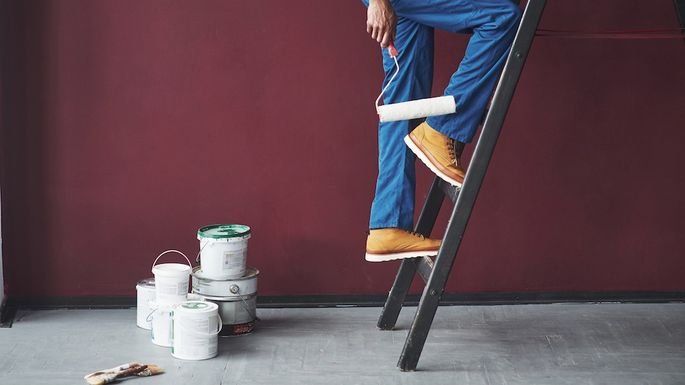Painting Your House in the Winter: 6 Facts Every Homeowner Should Know
Winter may not seem like the ideal time to paint your home. As temperatures drop and snow looms on the horizon, most folks’ home-improvement plans go into hibernation (except for some perhaps overdue winterizing projects). After all, you’ve spent all year beautifying your house; now it’s time to slow down and cozy up.
But if painting your house does fall on your current to-do list, don’t stress. There are some unexpected benefits to painting your home in the winter!
Before you pick up a paintbrush or call a professional painter, you should have a full understanding of the ins and outs of painting when it’s cold outside. Below, the benefits and tips all homeowners should know about painting their home during the winter.
1. Painting your home in winter might be cheaper
If you’re hiring a professional to paint the outside of your home and if budget is a concern, scheduling the job during the winter may be your best bet.
Exterior painting requires temperatures of more than 35 degrees at night, for two days after the paint is applied. Freezing temperatures in many parts of the country mean fewer jobs for painters, and consequently less demand in the winter.
“Since pricing is based in part on demand, you’ll likely get a lower estimate for your paint job during this time,” says Eric Regan, CEO of Mission Painting & Home Improvements.
That said, you’ll obviously have to keep an eye on the weather forecast as your appointment approaches.
2. Paint dries faster in winter
It’s a common misconception that interior paint dries more quickly in the heat of summer. The opposite is true if summers in your area are muggy.
“The colder the weather gets, the less humid it is, which means you get faster drying times in the wintertime, because of the lower humidity levels in the air,” says Issabel Williams from Fantastic Handyman. Painting when it’s cold and dry means that you can get your paint job done earlier.
Humid air can also lead to blistering paint, chips, and flakes.
“Paint in a humid environment stays wet for a longer time and can pick up dust and be easily damaged, especially if you bring back the furniture too early,” Williams says.
3. Winter storms can cause problems
While cold temperatures may mean drier weather, winter storms can make it wet pretty quickly. That’s why painting the exterior of your home in the winter should be carefully timed.
“If weather permits, you can paint the home during colder times, assuming there is no rain,” says Terry Koubele, owner of Five Star Painting of Federal Way, a Neighborly company.
Freezing temperatures and lingering dew on surfaces prevent paint from drying properly, and it can end up tacky or sticky, according to Carmelo Marsala, owner of Spray-Net, Inc.
4. Exterior paint might have to wait
Where you live will more than likely determine whether or not you’re able to paint your home’s exterior during the winter. Regan notes that if you live in an area where winter temperatures remain above 35 degrees, you might be able to schedule it.
But in colder areas, where freezing weather is the norm, you’ll probably have to wait until spring. Unless you have a specific reason (for example, plans to sell the home during the spring), it’s best to avoid painting the outside of your house in the winter.
5. You’ll need to check the thermostat
When painting the interior of your home, the temperature should ideally be above 60 degrees. This usually isn’t a problem for most homes, even in the winter, thanks to indoor heating.
However, during the winter, the cold from outside can mean that your walls are much colder than the temperature of the room shown on thermostat.
“You should be more concerned about the temperature of the surface you’re painting, instead of the temperature of the environment you’re painting in,” says Andrew Wilson of Contractor Advisorly.
Wilson recommends increasing your thermostat temperature well above 60 degrees or the manufacturer’s recommended minimum temperature. If the walls are too cold, the paint may not bond to them correctly.
6. Specialty paint is your friend in winter
If you’re worried about exterior paint not drying fast enough in unreliable weather conditions, you should reach for paints and primers that have been specially formulated for cold temperatures.
“Certain paint additives contain chemicals to help increase the freeze resistance of paints, helping them dry in colder weather,” Wilson says.
Since cold temperatures can make paint more viscous, you can also use additives to achieve a professional-looking texture.
“They can prevent your paint from getting thicker, and allow you to get a nice, smooth finish,”

